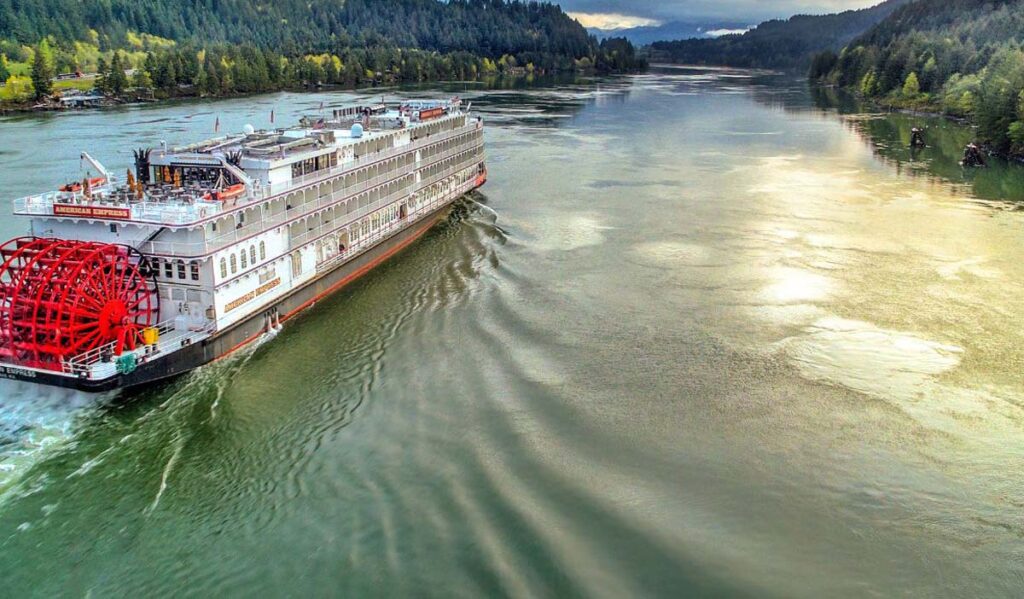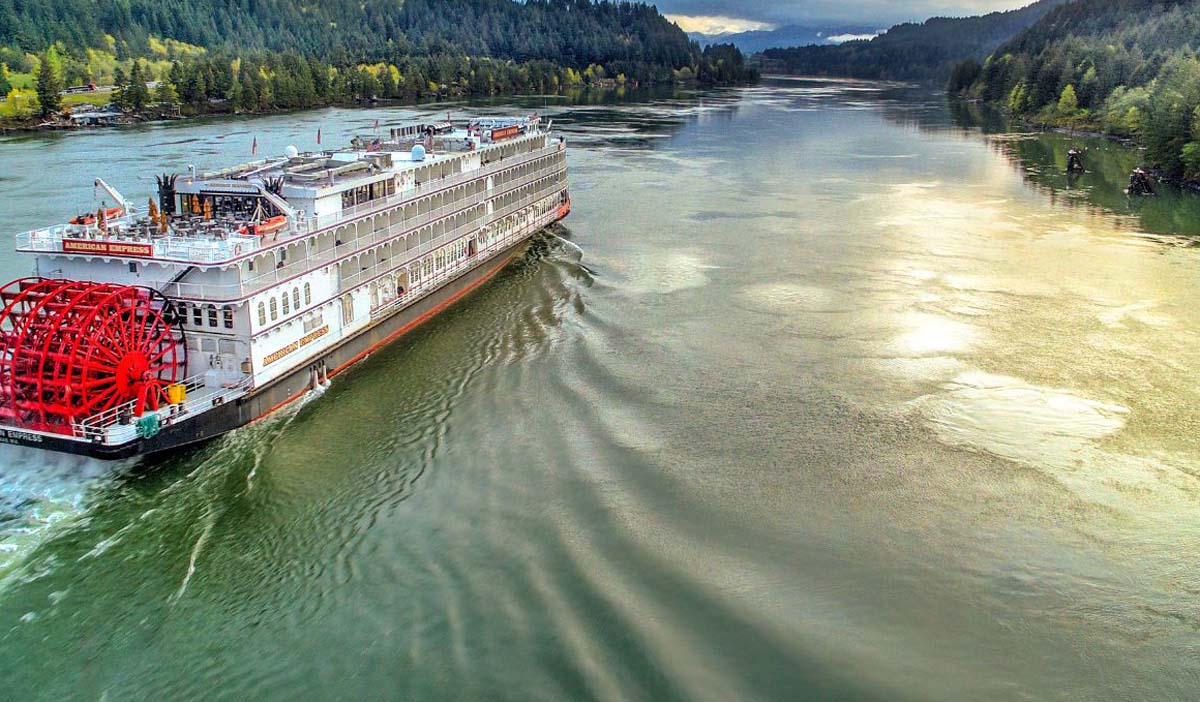Rivers are vital sources of water that transport moisture and nutrients to various places around the world. They also play an important role in the water cycle and serve as drainage channels for surface water. The US has some of the widest rivers in the world, which are not only impressive in size but also useful for the country.
Rivers are essential for life on Earth. They provide water, nutrients, transportation, recreation, and beauty to millions of people and animals. The US is home to some of the widest rivers in the world, which are impressive in size and rich in history and culture. In this article, we will explore the top 10 widest rivers in the US, based on their average width at their widest point. We will also learn about their sources, lengths, destinations, uses, and attractions. Whether you are a nature lover, a history buff, or a curious traveler, you will find something interesting and inspiring in this article.
TOP Widest Rivers in the US
Here are the top 10 widest rivers in the US, based on their average width at their widest point.

Mississippi River
The Mississippi River is easily the widest river in the US, with an average width of about 2 miles (10,560 feet) at Lake Pepin, which is located on the border between Wisconsin and Minnesota. The Mississippi River is also the 15th largest river in the world by discharge, with a rate of 16,792 cubic meters per second into the Gulf of Mexico. The Mississippi River runs through 10 states, from Minnesota to Louisiana, and has been a major natural landmark and a vital channel for trade and transportation throughout the nation’s history.
Neuse River
The Neuse River is one of the widest rivers in the US, with a total length of 230 miles and an average width of about 6 miles (31,680 feet) at its mouth near New Bern, North Carolina. The Neuse River is also the widest river entirely contained within a single state. The Neuse River offers scenic views and recreational opportunities to several state parks along its course. New Bern, North Carolina, was founded near the mouth of the Neuse River in 1710, making it the second-oldest town in the US.
Missouri River
The Missouri River is another one of the widest rivers in the US, with an average width of about 0.8 miles (4,224 feet) at its confluence with the Mississippi River near St. Louis, Missouri. The Missouri River is also the longest river in North America, stretching for 2,341 miles across seven states, from Montana to Missouri. The Missouri River receives water from various sources, including Brower’s Spring and the Firehole River-Madison River. The Missouri River provides scenic amenities and wildlife habitats to several state parks and national monuments along its course.
Yukon River
The Yukon River is one of the largest and widest rivers in North America, flowing for 1,980 miles through Alaska and Canada. The Yukon River has an average width of about 0.6 miles (3,168 feet) at its mouth near Emmonak, Alaska. The Yukon River originates from Llewellyn Glacier near Atlin Lake in British Columbia and empties into the Bering Sea. The Yukon River supports a rich biodiversity of fish and wildlife, including salmon, trout, moose, bears, wolves, and eagles.
Rio Grande
The Rio Grande is one of the longest and widest rivers in North America, flowing for 1,885 miles along the border between Mexico and Texas. The Rio Grande has an average width of about 0.5 miles (2,640 feet) at its mouth near Brownsville, Texas. The Rio Grande originates from the San Juan Mountains in Colorado and empties into the Gulf of Mexico. The Rio Grande serves as a natural boundary and a source of water for irrigation, hydropower, and recreation for both countries.
Colorado River
The Colorado River is one of the most famous and widest rivers in North America, flowing for 1,450 miles through seven states and two countries. The Colorado River has an average width of about 0.4 miles (2,112 feet) at its mouth near San Felipe, Baja California. The Colorado River originates from La Poudre Pass Lake in Rocky Mountain National Park in Colorado and empties into the Gulf of California. The Colorado River is known for its spectacular canyons, such as the Grand Canyon and Glen Canyon, as well as its dams and reservoirs that provide water and power to millions of people.
Arkansas River
The Arkansas River is a major tributary of the Mississippi River that flows through four states: Colorado, Kansas, Oklahoma, and Arkansas. It is the sixth-longest river in the US and the 45th longest in the world. It originates from the Rocky Mountains near Leadville, Colorado, and empties into the Mississippi near Napoleon, Arkansas. The Arkansas River has a rich history and culture, as well as diverse wildlife and scenery. It is also used for irrigation, hydropower, navigation, and recreation.
Columbia River
The Columbia River is one of the longest and widest rivers in North America, flowing for 1,243 miles through seven states and one province. The Columbia River has an average width of about 0.4 miles (2,112 feet) at its mouth near Astoria, Oregon. The Columbia River originates from Columbia Lake in British Columbia and empties into the Pacific Ocean. The Columbia River is known for its hydroelectric dams, such as the Grand Coulee Dam and the Bonneville Dam, which provide power and irrigation to the region. The Columbia River also supports a diverse ecosystem of fish and wildlife, including salmon, sturgeon, otters, eagles, and ospreys.
Ohio River
The Ohio River is one of the most developed and widest rivers in North America, flowing for 981 miles through six states. The Ohio River has an average width of about 0.3 miles (1,584 feet) at its confluence with the Mississippi River near Cairo, Illinois. The Ohio River originates from the confluence of the Allegheny River and the Monongahela River near Pittsburgh, Pennsylvania. The Ohio River serves as a major transportation route for barges and boats carrying coal, steel, petroleum, and other commodities. The Ohio River also offers scenic views and recreational opportunities to several state parks and historic sites along its course.
Snake River
The Snake River is one of the longest and widest rivers in North America, flowing for 1,078 miles through four states1. The Snake River has an average width of about 0.3 miles (1,584 feet) at its confluence with the Columbia River near Pasco, Washington2. The Snake River originates from Yellowstone Lake in Yellowstone National Park in Wyoming and empties into the Columbia River. The Snake River is famous for its canyons, waterfalls, rapids, and gorges, such as Hells Canyon and Shoshone Falls. The Snake River also provides water for irrigation, hydropower, and recreation for the region.
Conclusion
Rivers are amazing natural wonders that deserve our appreciation and protection. The US has some of the widest rivers in the world, which offer a variety of benefits and opportunities to the country and its people. In this article, we have learned about the top 10 widest rivers in the US, their origins, lengths, widths, uses, and attractions. We hope you enjoyed this article and learned something new about these magnificent rivers. If you ever have a chance to visit any of these rivers, don’t miss it. You will be amazed by their beauty and power. Thank you for reading this article and have a great day.

